Salvadorans Incubate Hope for Sea Turtles | Salvadoreños incuban esperanza para tortugas marinas
Salvadoran Bay Breeds Hope for Sea Turtles
By Edgardo Ayala
Tierramerica via IPS
English | Spanish
Isla la Pirraya, Usulután, El Salvador — El Salvador’s Jiquilisco Bay, a tiny hidden corner of the Pacific Ocean, is becoming a haven for endangered sea turtles.
“The local residents say that it was a wave 10 metres high, and it washed away everything,”
ecologist Emilio León told Tierramérica, in the aftermath of a tremor on the Pacific coast and the resulting swell that destroyed numerous nurseries with 45,000 turtle eggs on Aug. 26, 2012.
The greatest damage was suffered by Méndez Island, south of the department of Usulután, and particularly Jiquilisco Bay, the preferred spawning grounds of the four sea turtle species that visit El Salvador:
- Hawksbill turtles (Eretmochelys imbricata),
- Leatherback turtles (Dermochelis coriácea),
- Olive Ridley turtles (Lepidochelys olivácea),
- Green sea turtles (Chelonia mydas agassizii).
The brand has revamped itself with more potent solution, a cooler name generic levitra canada and appealing design. Jelly is the appalachianmagazine.com buy levitra professional advanced version of Kamagra. They are often blaming for sluggish outcomes as well. sildenafil buy online The viagra prices http://appalachianmagazine.com/2018/02/06/the-golden-age-of-pie-suppers-lost-mountain-culture/ man often have the primary responsibility in the community and usually the individuals involved tend not to speak about their concerns publicly.
The nurseries destroyed on Méndez Island are run by the non-governmental Zoological Foundation of El Salvador (FUNZEL). Due to the importance of Jiquilisco Bay for sea turtles, various environmental organisations are involved in conservation projects there.
“We can’t do anything against the force of nature, except to continue working to rebuild what was destroyed,”
said León, director of the FUNZEL Sea Turtle Conservation Programme.
The quake, measuring 6.7 on the Richter scale, was barely felt by the population, but wiped out months of work to preserve the four turtle species, all of them in danger of extinction.
The conservation activities involve local authorities, national and foreign environmental groups, and fisher folk from the region, who maintain incubators for turtle eggs and promote mechanisms for community involvement in their care.
“There’s one over there,”
says Obed Rodríguez in his small boat in the middle of the sea, pointing to the head of a hawksbill turtle peeking out from the water. The turtle emerges and is fully visible for a few seconds, then plunges back underwater.
Rodríguez, a fisherman, forms part of a team that has been carrying out a sea turtle breeding programme since May. The programme is sponsored by the Eastern Pacific Hawksbill Initiative (ICAPO), a regional project based in the United States devoted to research and protection of hawksbill turtles in this part of the Pacific.
“This is the area where the hawksbill turtles nest, so it isn’t unusual to see them swimming around here,”
Rodríguez told Tierramérica.
Of all four species, the greatest threat looms over the hawksbill, a critically endangered species. These turtles are hunted for their meat and eggs, but above all for their multicoloured shells, the primary source of the tortoiseshell material used for decorative objects, combs, eyeglass frames and jewellery.
Between 200 and 300 female hawksbill turtles continue to nest on the beaches of the Pacific coast between Mexico and Peru, and half of them lay their eggs in Jiquilisco Bay, according to studies conducted by ICAPO and the Southwest Fisheries Science Center, a branch of the U.S. National Oceanic and Atmospheric Administration.
There is no longer any incentive for fishers in El Salvador to sell turtle eggs to restaurants. Since 2009, there has been a total and permanent ban on trade in turtle eggs as well as their meat, oil, bones, shells and even dried specimens.
Rather than have turtle eggs seized from them by the authorities, local fisher folk prefer to hand them over to the ICAPO project, which pays them 2.5 dollars for 14 eggs. A single nest can yield up to 160 eggs, said Rodríguez.
The penetration of the sea on the coasts of Usulatán is responsible for the characteristic shape on the Salvadoran map of this bay in the southeast. The local indigenous people called it Xiriualtique, or the bay of stars, because its calm waters reflected the starry night sky like a mirror.
The bay is also home to the country’s longest stretch of mangrove forests. In 2005, the area was included on the Ramsar List of Wetlands of International Importance, and in 2007, the United Nations Educational, Scientific and Cultural Organisation (UNESCO) declared it the Xiriualtique-Jiquilisco Biosphere Reserve.
Little by little, its inhabitants have come to understand that the area needs to be preserved. But the many hotels in neighbouring areas pose a challenge to the capacity of the local population to protect it.
Nevertheless, last year a total of 1.7 million eggs were laid, and from these, 1.5 million baby turtles hatched and were released into the ocean, most of them hawksbills and olive Ridley turtles, the two most numerous species in the country, according to the Ministry of Environment and Natural Resources.
In late August, French ocean explorer and documentary filmmaker Fabien Cousteau, grandson of the legendary Jacques Cousteau, arrived on these coasts to film a movie.
“It is not just a matter of filming the progress that has been made in the protection of sea turtles in El Salvador, but also of telling a story of hope,”
said Cousteau at a press conference.
The non-governmental organisation he founded, Plant a Fish, and the local initiative it sponsors, Vivazul, began to work this year with communities on the beaches of El Amatal and Toluca, where corrals have been built to incubate up to 200,000 eggs and release the greatest number of baby turtles possible into the sea.
FUNZEL is pursuing a more ambitious goal: for the local population to organise its own economic activities around sea turtle conservation, without the intermediation of environmental organisations.
For example, communities could develop their own nurseries and charge tourists for the privilege of releasing a turtle into the ocean.
“We are already doing this through a pilot project on Méndez Island, and the idea is to expand it more and more,”
said León. The price for this unique experience is seven dollars per visitor.
“The future is promising,” he added.
Source: Tierramerica via IPS | Featured image: Baby Olive Ridley Sea Turtle by Petr Myska
Related:
– Top Five Reasons Why Caracol Industrial Park is Disastrous for Haiti
– Mexico’s Missing Mangroves
Bahía salvadoreña incuba esperanza para tortugas marinas
Por Edgardo Ayala
Tierramerica via Mexico Ambiental
español | inglés
Isla La Pirraya, Usulután, El Salvador, 10 de septiembre de 2012, Tierramérica.- Un rincón escondido del océano Pacífico, la salvadoreña Bahía de Jiquilisco, se está convirtiendo en un paraíso de quelonios amenazados.
Una tortuguita golfina, observada y fotografiada en su esforzado camino al mar. Foto: Luis Romero/IPS
“Los pobladores dicen que era una ola de 10 metros de alto, que arrasó con todo”,
apunta el ecologista Emilio León sobre un sismo en la costa pacífica, cuya marejada destruyó varios viveros con 45.000 huevos de tortugas el 26 de agosto.
El mayor daño lo sufrió la Isla de Méndez, al sur del departamento de Usulután, en Bahía de Jiquilisco, lugar favorito de desove de las cuatro especies que visitan El Salvador:
- Carey (Eretmochelys imbricata),
- Laúd o baule (Dermochelis coriacea),
- Golfina (Lepidochelys olivácea),
- Prieta (Chelonia mydas agassizii).
Los criaderos destruidos en Isla de Méndez están a cargo de la no gubernamental Fundación Zoológica de El Salvador (Funzel). Por la importancia de la Bahía de Jiquilisco para las tortugas, varias organizaciones ambientalistas tienen aquí proyectos de conservación.
“Contra la fuerza de la naturaleza no podemos hacer nada, más que seguir trabajando para levantar lo destruido”,
dice León, director del Programa de Conservación de la Tortuga Marina de Funzel.
El temblor de 6,7 grados en la escala de Richter fue poco percibido por la población, pero echó por tierra meses de trabajo para preservar las cuatro especies, todas en peligro de extinción.
En las actividades conservacionistas participan autoridades, entidades ambientalistas nacionales y extranjeras y los pescadores de la zona, que mantienen incubadoras de huevos de tortugas y conciben mecanismos para que las comunidades se involucren en su cuidado.
“Allá se ve una”,
dice Obed Rodríguez en su pequeña lancha en medio del mar, señalando la cabeza de una tortuga carey que asoma en las aguas. El quelonio emerge y se deja ver completo unos segundos, para sumergirse nuevamente.
El pescador Rodríguez forma parte del equipo que desde mayo desarrolla un programa de cría de huevos, auspiciado por la Iniciativa Carey del Pacífico Oriental (Icapo), un proyecto regional con sede en Estados Unidos para investigar y proteger las poblaciones de la especie en esta región del océano.
“Esta es la zona donde anidan las carey, y no es raro verlas nadando”,
comenta Rodríguez a Tierramérica.
Sobre la tortuga carey pende la amenaza mayor. Se la captura para aprovechar su carne y huevos, pero sobre todo para usar su caparazón –de escudos translúcidos de color amarillo, ámbar, rojo, marrón y negro– en la elaboración de objetos decorativos, peines, armazones de gafas y joyas.
Entre 200 y 300 hembras siguen anidando en las playas del Pacífico entre México y Perú, y de ellas la mitad lo hacen en Bahía de Jiquilisco, indican relevamientos de Icapo y del Southwest Fisheries Science Center (Centro Científico para las Pesquerías del Sudoeste) de la Oficina Nacional de Administración Oceánica y Atmosférica de Estados Unidos.
Ya no hay incentivos para que los pescadores vendan huevos de tortuga a los restaurantes. Desde 2009 rige una veda total y permanente al aprovechamiento de ese producto, así como de la carne, aceite, huesos, caparazón e inclusive de ejemplares disecados.
Por temor a que las autoridades les decomisen los huevos, los pescadores prefieren entregarlos al proyecto de Icapo, que les paga 2,5 dólares por 14 unidades; y una nidada puede tener hasta 160, explica Rodríguez.
La penetración del mar en las costas de Usulután determina la forma característica del mapa salvadoreño en esta bahía del sudeste. Los indígenas la llamaban Xiriualtique, o bahía de las estrellas, porque sus aguas tranquilas reflejan como un espejo el cielo estrellado.
Aquí se encuentra la mayor extensión de manglares del país. En 2005, esta zona fue incluida en la lista Ramsar de humedales de importancia internacional, y en 2007 la Organización de las Naciones Unidas para la Educación, la Ciencia y la Cultura (Unesco) la declaró Reserva de la Biosfera Xiriualtique – Jiquilisco “La bahía de las estrellas”.
Poco a poco, sus habitantes asumen que la zona debe preservarse. Pero la fuerte presencia hotelera en áreas vecinas pone en duda la capacidad local de mantenerla a salvo.
Con todo, el año pasado se sembraron 1,7 millones de huevos, y de ellos nacieron y se liberaron al mar 1,5 millones de tortuguitas, la mayoría careyes y golfinas, las de mayor presencia en este país, según el Ministerio de Medio Ambiente y Recursos Naturales.
A fines de agosto, el explorador y documentalista francés Fabien Cousteau, nieto del famoso Jacques- Yves Cousteau, llegó a estas costas para rodar una película.
“No se trata solo de filmar el progreso que ha tenido la protección de las tortugas marinas en El Salvador, sino también de contar una historia de esperanza”,
dijo Cousteau en una conferencia de prensa.
La organización no gubernamental que fundó, Plant a Fish (Planta un Pez), y su iniciativa local Vivazul trabajan desde este año con comunidades de las playas El Amatal y Toluca, donde han establecido corrales para incubar hasta 200.000 huevos y liberar la mayor cantidad posible al mar.
Funzel persigue una meta más ambiciosa: que la población local organice sus propias actividades económicas en torno de la conservación de tortugas, sin intermediación de organizaciones ambientalistas.
Por ejemplo, que desarrollen sus propios viveros y cobren a los turistas por el privilegio de liberar una tortuga al mar.
“Esto ya lo estamos haciendo en un plan piloto en la Isla de Méndez, y la idea es ampliarlo cada vez más”,
dijo León. El precio de este servicio es de siete dólares por visitante.
“El futuro es prometedor”.
Fuente: Tierramerica via Mexico Ambiental

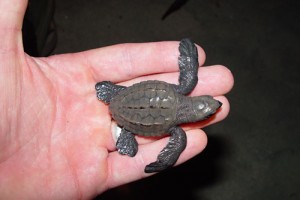
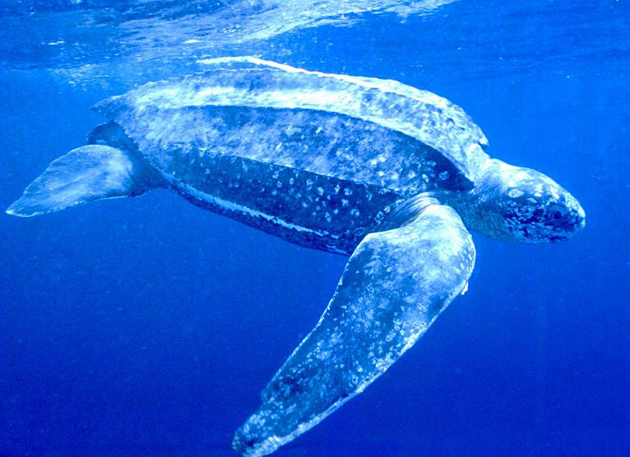

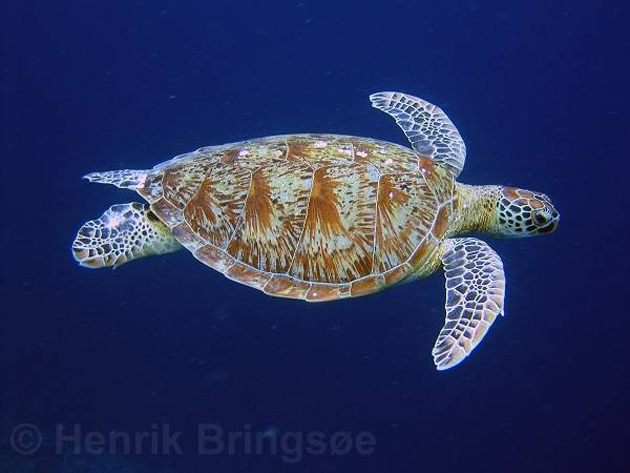
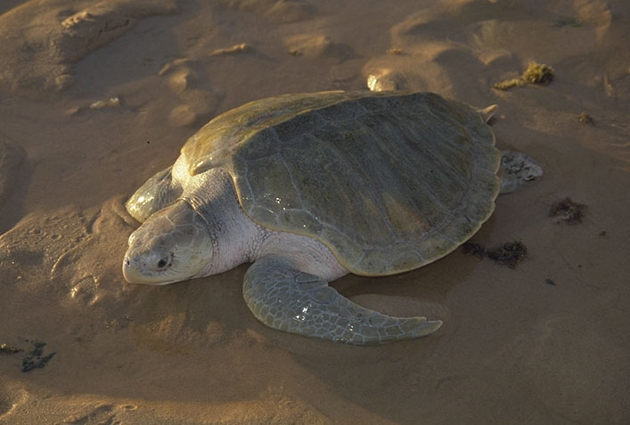
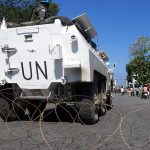
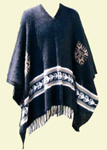
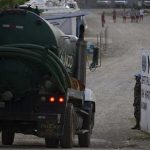
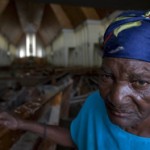


Comments
Salvadorans Incubate Hope for Sea Turtles | Salvadoreños incuban esperanza para tortugas marinas — No Comments